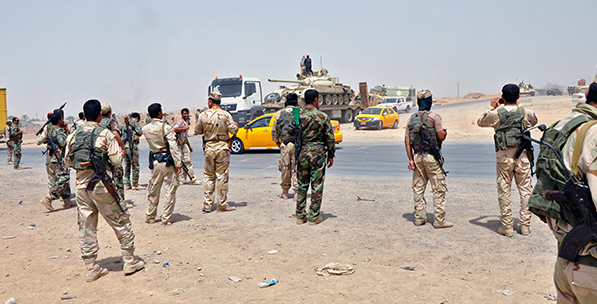The capture of Mosul by the Islamic State of Iraq and the Levant (ISIS) and the Jihadist militant group’s progress toward Baghdad set in motion a process in Iraq and the broader Middle East. Observers thus turned away from Syria, on which they concentrated to understand regional politics for some time, and refocused their attention on Iraq. A number of policies in Iraq and the region had an influence, direct and indirect, on ISIS’s rapid and relatively smooth progress. Moreover, these policies also facilitated the emergence of ISIS and similar radical Salafist organizations as well as their consolidation. The region is changing and radical Salafist organizations use the situation to gain strength by relying on numerous players and dynamics. In this context, it is important to discuss how such groups came into being and grew stronger.
Without a doubt, the key factor behind the organizations’ growing strength is that the majority of the Islamic world experienced colonialism after the World War I and has been forcibly placed under the rule of domestic forms of colonial power upon attaining independence. Anti-democratic, authoritarian pro-Western regimes hindered political participation and representation to create a hospitable environment for radical organizations. A more recent contributing factor was the Russian invasion of Afghanistan and Chechnya. The anti-Russian struggle, which received support from various countries including the U.S., Pakistan and Saudi Arabia, paved the way for the emergence of a solidarist, professional Jihadist organization that supersedes national borders. Al-Qaida and the Taliban, among others, emerged out of this situation.
The third rupture that provides insights into the current situation occurred on 9/11 and the subsequent U.S. invasion of Iraq in 2003. Washington’s policies after the invasion both revealed known ethnic and sectarian fault lines, and created a fertile ground for Salafist organizations as a Shi’a government came to power. The Nouri al-Maliki administration’s pro-Shi’a policies and removal of Sunnis from positions of power facilitated contact and cooperation between Sunni tribes and Salafist organizations. Against this background, it is possible to make sense of ISIS’ post-2010 growth in Syria and Iraq’s predominantly Sunni areas.
The fourth and most recent rupture came after 2011, when the Arab Spring revolutions, that began in Tunisia and challenged various authoritarian regimes in the Middle East and North Africa, empowered local movements affiliated with the Muslim Brotherhood. Israel, Saudi Arabia and the U.S., among others, sought to stop the trend and choke these popular, pro-democracy movements by assisting the old regimes and supporting radical Salafist groups. Syria, surely enough, was the staging ground for the plan. While Russia and Iran assisted the Assad regime, Saudi Arabia and other Gulf states lent support to Salafist organizations. Meanwhile, the U.S. and Western governments helped reduce the Syria affair to a struggle between the regime and the Salafists to allow the fight to continue. The prolonged civil war in the country fueled ethnic and sectarian alienation. The fight thus evolved into a form of the Cold War for Russia and the West, and a sectarian proxy war for Iran and Saudi Arabia. The Salafist organizations, in the meantime, began fighting each other as opposed to the Assad regime.
Such developments led to the rise and consolidation of ISIS and other radical groups. It is also important to note that the U.S. has no intention of becoming involved in the region and the West is almost exclusively concerned with Israel’s security. Meanwhile, both Iraq and Syria serve as a battleground for Iran and the Gulf over sectarian dominance. By contrast, the Kurds gained significant influence in both countries but have not been immune to sectarian strifes.
In conclusion, the Islamic world today is going through an intense process as multiple pieces of the puzzle have been simultaneously set in motion. ISIS’s capture of Mosu
In this article
- Domestic Policy
- Opinion
- 2003
- 2010
- 2011
- Afghanistan
- Al Qaeda
- al-Qaida
- Arab Spring
- Assad Regime
- Bashar Al Assad
- Civil War
- Cold War
- DAESH
- gulf
- Iraq
- ISIL
- ISIS
- Islam
- Islamic
- Islamic Republic of Iran
- Israel
- Middle East
- Mosul
- Muslim
- North Africa
- Nouri al-Maliki
- Pakistan
- Proxy War
- Russia
- Saudi Arabia
- September 11 2001 Attacks | 9/11
- Sunni
- Syria
- Syrian Civil War
- Syrian Conflict
- Syrian Crisis
- Syrian Regime
- Tunisia
- United States (US)
- US Invasion
- US Invasion of Iraq
- Western World

